Collaboration tools, frameworks and exercises you might not be using yet

The best teams work together to solve problems rather than working alone to try and get ahead of the pack. This is why enabling collaboration between your team members is important — collaboration is key for commercial performance.
There are countless tools, frameworks and exercises to help promote a collaborative culture, but what happens when those methods get over-used?
As the exercises start to go stale, so do team morale and engagement. You can try the same old methods time and time again, sure. But eventually, you’ll need to inspire a spark — the kind that only new ways of working can evoke.
At EasyRetro, we’ve made it our goal to put the fun back into fundamental practices. So with that in mind, we’ve compiled a list of amazing collaboration tools, frameworks and exercises that you’re probably not using yet, but should.
7 great tools that make collaboration easy
Zoho Cliq
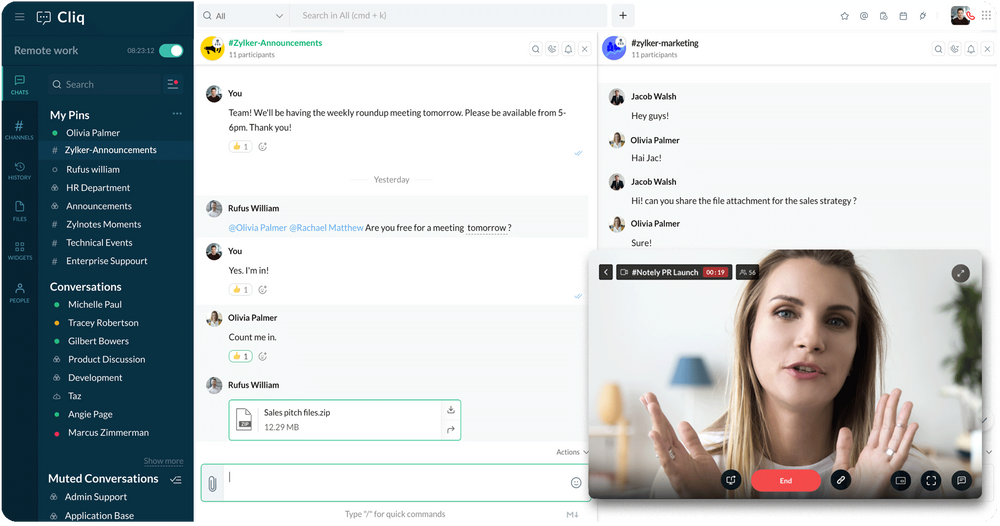
Zoho Cliq is a real-time team communication tool that lets you view multiple conversations at once. Say goodbye to switching back and forth between conversations, different applications and group chats, everything is right there on your dashboard.
Each conversation has its own dedicated column so you don’t get mixed up with multiple chats.
Zoho Cliq offers a free plan which includes video conferencing with up to 100 users, screen sharing and whiteboards to help your team collaborate with ease.
Notion

Notion is one of the easiest collaboration platforms to get used to, making it perfect for any team regardless of experience.
This collaboration tool allows teams to work in real-time, share documents with the entire company and has the ability to embed over 500 external tools into its one-stop hub. Almost everything you could need can now be found this a single application — saving you time and effort trying to find various files or keeping track of constantly changing discussion points.
Notion offers a free plan with paid upgrades and scalable plans.
Twist
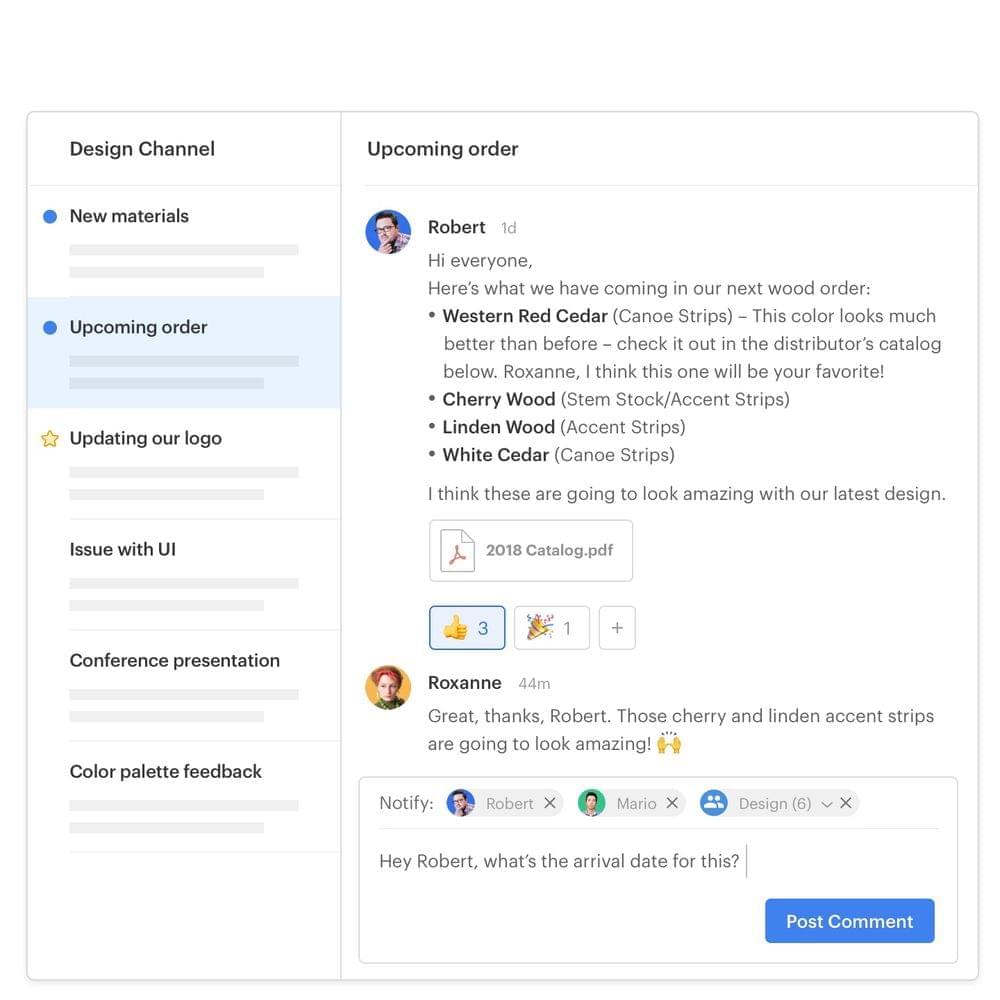
Doist — the company behind Todoist — are aiming to make synchronous team messaging apps (such as Slack) a thing of the past. Twist promises a calmer, more balanced, more fulfilling way to work and collaborate, especially for remote and asynchronous teams.
Twist offers a new and easy way to organize and keep track of discussions with threads, rather than channels. Their message board-like interface is easy to use, though using threads and the inbox will take a little getting used to.
Twist is free, with paid upgrades available.
Flock

With Flock, team members can exchange messages, share files, host video conferences, manage to-dos, and set up calendar events all from one easy-to-use app.
Flock offers all the usual integrations that you would expect. That allows any team to quickly incorporate Flock into their existing workflow and take advantage of the extra features Flock brings to the table.
Flock offers a free-to-use package, as well as a Pro package offering personalized onboarding, 24/7 customer support on top of their great features.
Wimi
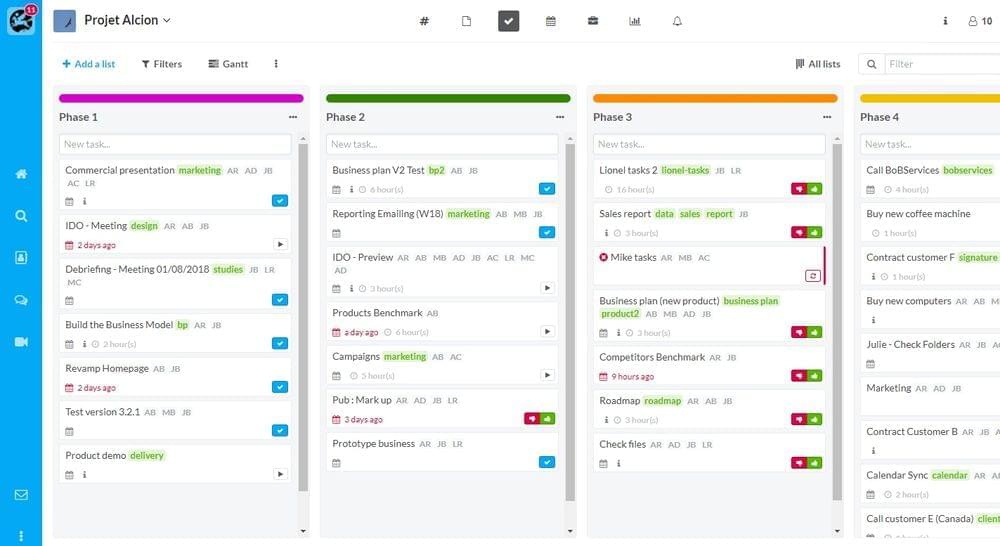
Wimi offers users their own ‘unified workspaces’ where teams can manage projects and share files and calendars. A unique feature of Wimi is their rights-based system. This allows you to manage which team members can access certain areas, offering an extra layer of security for sensitive tasks and data.
Wimi offer three “flagship” products:
- Wimi Teamwork - A collaboration tool packed full of features to help your team work smoothly.
- Wimi Drive - A cloud-based storage platform
- Wimi Armoured - A highly secure platform with all the features of Wimi Teamwork, but with end-to-end encryption.
Wimi offers a free trial and a scalable pricing structure.
Milatone
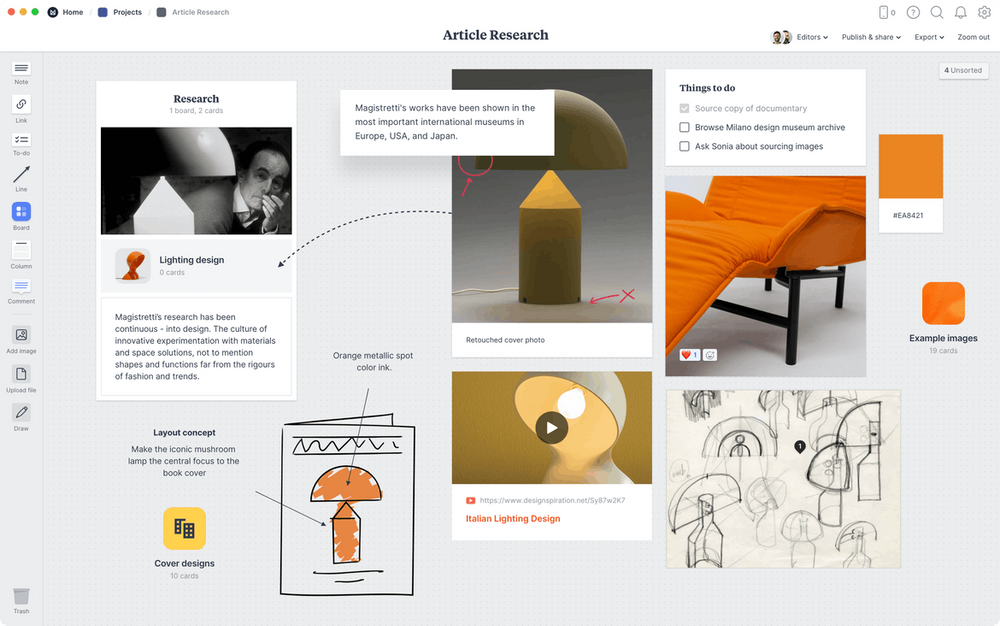
Milanote is a really cool platform that caters to the creative side of product development.
Described as “The Evernote for Creatives”, Milanote allows you to create notes and to-do lists, upload images and files as well as giving you the Milanote Web Clipper, which lets you save ideas from any website with a single click.
If your team works better with visualization, mood boards and more creative methods for product development, Milanote is the tool you need.
Milanote offers a free, limited plan as well as paid upgrades and scalable pricing.
EasyRetro
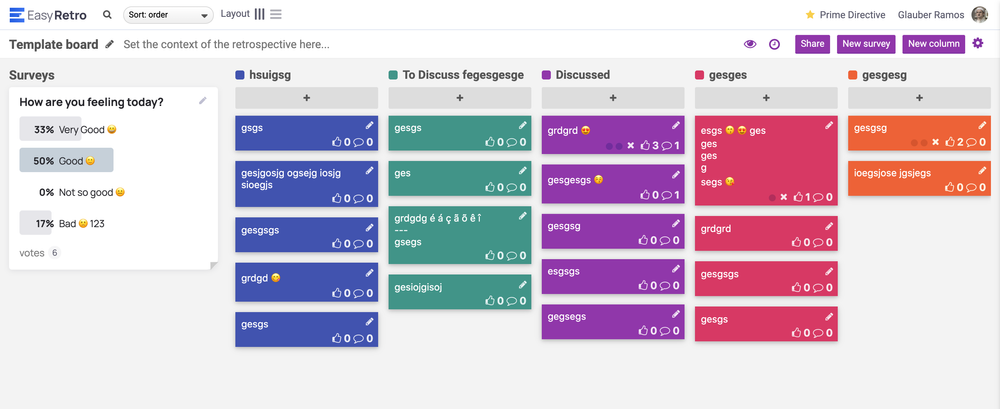
EasyRetro is the collaboration tool for Agile teams working in sprints. Designed to make retrospective meetings more fun, engaging and beneficial, this tool brings together team decision-making and smart prioritization of tasks.
The result? A team that’s all pulling in the same direction together. And isn’t that what collaboration is all about?
4 Agile frameworks that promote team collaboration
Lean
Lean is a software development approach derived directly from Toyota’s Lean Manufacturing methodology (yep, the very same Toyota that brought us Kanban, too). As the name suggests, Lean is a zero-frills framework that aims to eliminate waste, empower your team, improve build quality, enhance learning and help your team create deliverables within the quickest amount of time possible.
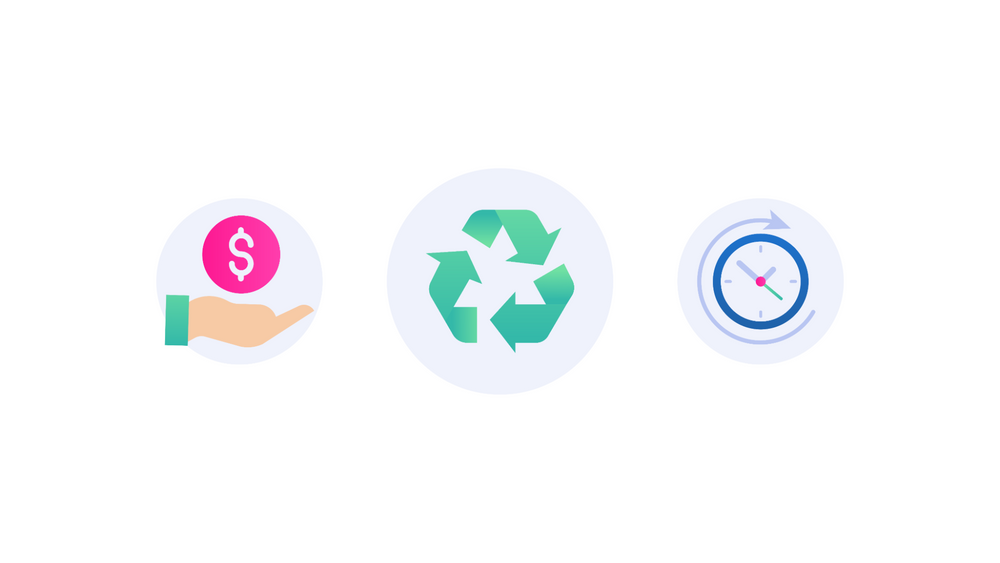
The Lean framework enhances the learning process by integrating testing, short iteration cycles, and refactoring. It ensures that consistency is built into the system by automating testing through builds, installations, and continuous integration. If utilized correctly, Lean will save your team time and money while still maintaining high-quality output.
Most importantly, Lean emphasizes the team as a center of decision-making. Rather than a traditional top-down approach, management looks to the team for the best solutions. This means your team needs to collaborate effortlessly or risk failure.
Hop straight into Lean with our Lean Coffee template!
Crystal
Crystal is the umbrella term for various Agile methodologies including Crystal Orange, Crystal Clear, Crystal Red and Crystal Yellow. Each crystal approach has its own structure with various factors (team size, project goals, etc) dictating which approach to use.

The Crystal Agile framework is built on two core beliefs:
- Teams can find ways on their own to improve and optimize their workflows
- Every project is unique and can change on a whim.
These beliefs place a huge emphasis on the need for collaboration between team members. The team is entirely responsible for deciding how the project should progress and takes away the need for strict documentation and rigorous schedules. Perfect for self-organized, highly adaptable teams.
Scaled Agile Framework (SAFe)
SAFe is the world’s most common system for scaling Agile through organizations. SAFe enables and accelerates faster time-to-market. It does this by making significant improvements in efficiency and quality, while also improving employee engagement.
SAFe is based around ten Lean Agile principles:
- Take an economic view
- Apply systems thinking
- Assume variability; preserve options
- Build incrementally with fast, integrated learning cycles
- Base milestones on an objective evaluation of working systems
- Visualize and limit WIP, reduce batch sizes, and manage queue lengths
- Apply cadence, synchronize with cross-domain planning
- Unlock the intrinsic motivation of knowledge workers
- Decentralize decision-making
- Organize around value.
These principles form the basis for all decision-making and practices within the SAFe framework.
SAFe promotes trust-building behaviors such as breaking down work into smaller batches so that developers can identify issues faster, offering real-time insight into backlog progress across stages, and inspecting and adapting routines.
Adaptive Software Development (ASD)
Speaking of adaptable, next up we have Adaptive Software Development — or ASD.
ASD empowers teams to efficiently and decisively adapt to changing demands or market needs by developing their products through versatile scheduling and continuous learning. It’s one of the best examples of Agile working and is a streamlined version of the Rapid Application Development framework.
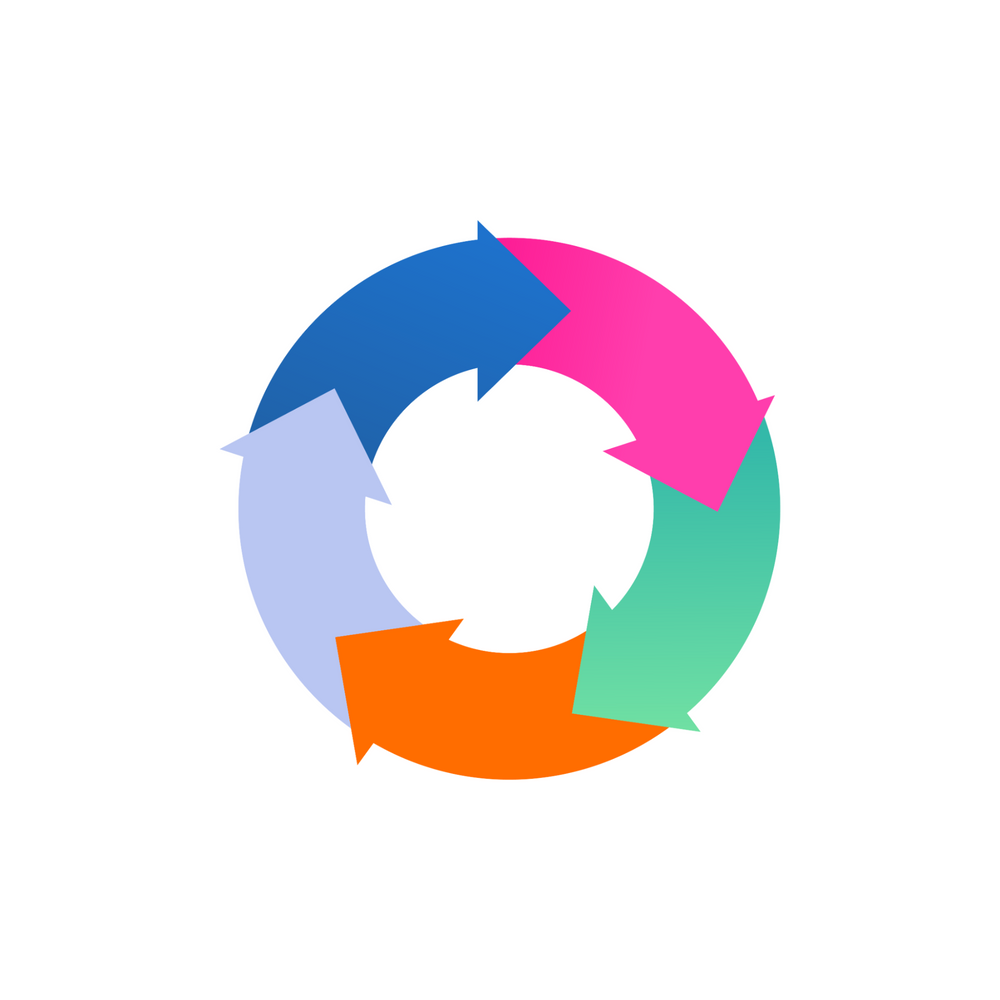
ASD is a gradual framework, with step names representing the uncertainty of complicated systems.
- Speculate - The “speculate” step has a significant role in team planning as it observes and discovers problems from any complex system.
- Collaboration - The “collaboration” step enables the collection and analysis of information required for the project.
- Learn - The “learn” step consistently delivers vital knowledge for project development to the members.
The process as a whole promotes innovation and discovery, helping team members to work together efficiently — gaining knowledge and sharing in their work.
3 team-building exercises to improve collaboration
Zoom
… And, for once, we don’t mean the video conferencing app!
This team-building activity is based on the picture books “Zoom” and “Re-Zoom” by Istvan Banyai, comprising 30 sequential pictures.
To play, the team is first divided into groups and each group member is given an image for their eyes only. The overall goal is to piece together a narrative from a set of images provided.
Without looking at each other’s images, players must work to place the images face down on the table in sequence — simply by speaking about and discussing what their image contains. The winning team is the first team to piece together their narrative in the correct order.
Because each participant keeps their image hidden from everyone else, the group must self-organize to create the narrative without the others knowing which part each person has. This requires effective communication, collaboration and problem-solving skills.
Scavenger Hunt
Sitting at a desk all day can be exhausting — that goes double when meetings drag on. Instead, give your team the chance to move around, have a break and enjoy themselves with a classic scavenger hunt.
To play, your team is divided into groups and tasked with finding items that have been hidden around the office/workspace. Each group is given an initial clue to get them started, which may lead to items or further clues as they get closer to the prize. The first group to complete the entire scavenger hunt is the winner, meaning they have to work together if they want the glory.
Scavenger hunts are a great way to promote timekeeping, creative problem-solving and collaboration while injecting a little fun into the workday.
Minefield
This is a very fun and active task that focuses on communication skills and collaboration. Find a suitable empty space and fill it up with obstacles or ”mines”. You can use office chairs, desks, balloons, water bottles and so on.
To play, your team needs to divide into pairs. One will be blindfolded and tasked with getting from one side of the room to the other, without tripping on any of the mines. The other will be responsible for guiding their partner across the room and avoiding the mines.
The best-performing teams will illustrate great communication skills and stellar team spirit.
Collaboration is the cornerstone of team success — use these tools today!
To put it simply, it’s a case of ‘collaborate or fail’ with modern, multi-functional teams. You could be product managers, marketers, finance teams, or customer service agents — everyone needs how to work together for the organization’s greater good.
We hope this list of collaboration tools, frameworks and exercises give you food for thought and inspiration for better team working.